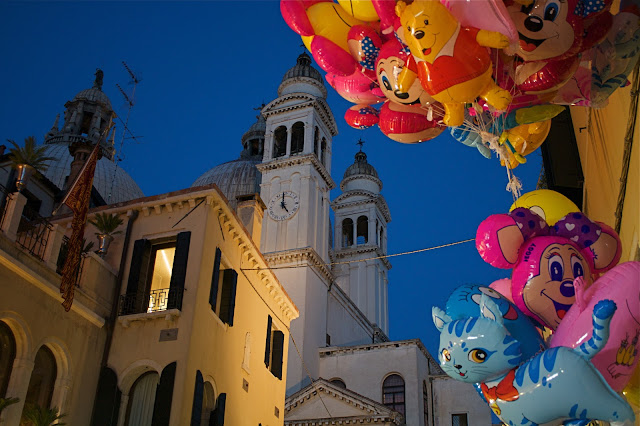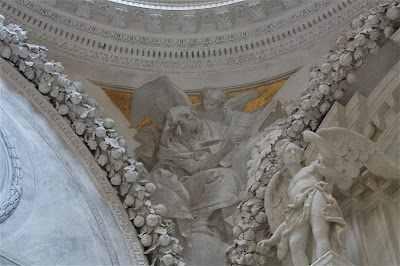The first time I noticed the life-size tank and giant pair of hands on the side of Canale Scomenzera, on the busy fondamenta at the western end of the Santa Marta section of Venice, I was disappointed not to have a camera with me and was sure it would be loaded onto a barge and hauled off any day. From what I could see it didn't appear to be an especially interesting piece of art, really, but the novelty of seeing it in the middle of a dock usually given over to construction materials and gravel and garbage barges endowed it with a certain interest.
That was over a year ago.
Soon after I first saw it, I'd periodically think that I really should make a point of going to take a photo of it before it disappeared--but I never did. And when I happened past it on a vaporetto, on the way to Piazzale Roma, say, I either never had a camera with me or, if I did, the tank and giant hands were entirely hidden by a load of grocery crates or something.
And the longer it remained in the same place, amid all the practical or industrial and non-aesthetic stuff of the fondamenta, the more my interest in it faded.
Only last week, as we returned home on a vaporetto from a trip to the Dolomites, did I finally happen to get a photo. And only today did I finally find out what the work is--or was.
It's by the artist Lorenzo Quinn (son of the actor Anthony), and was featured in the 2011 Biennale in two places: first, floating upon a raft moored off the island of San Servolo and, then, on the dry land within the Italian Pavillion.
There were originally five life-sized toy army figurines that went with it, but they appear to be MIA from the work's present site on the fondamenta of Canale Scomenzera. You can read all about the work, and see it in its original and complete form, here:
http://www.halcyongallery.com/news/lorenzo-quinn-54th-international-art-exhibition-venice-biennale
The illustration of the article above shows that the giant hands used to have the coloring of caucasian skin, but that pigmentation seems to have been washed away over the course of the work's extended exposure to the elements.
I wonder what the story is behind the work's apparent abandonment on the docks of Santa Marta. It couldn't have been cheap to fabricate it, and contemporary art of that size generally has a pretty hefty price tag.
And what about that green garbage barge with the provocative name of Veritas (in the photo at top) that happened to be moored near the work on the day I took the photo?
What kind of irreverent philosopher, or iconoclast, or perhaps even misanthrope, gives the name of Truth to the waste management department for the Veneto?
If one of the defining aims of much contemporary art after Marcel Duchamp was to show that in the context of a gallery or museum even the most ordinary objects can become aesthetic objects of contemplation or "art", perhaps the inverse is also obviously true.
That outside of the curated venues of the Biennale, abandoned to the elements of the workaday world, the Truth is that even the most technologically-advanced of fabricated aesthetic objects becomes merely--well, becomes merely garbage. Just another thing taking up space on a dock with too little of it anyway. Of interest, finally, only in its minimal usefulness as a surface to lean the broken rudder of a boat against.





























